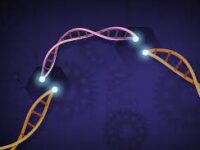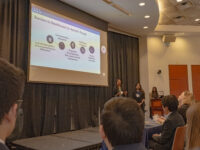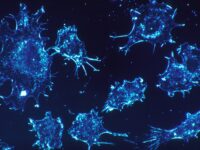Imagine the sun-kissed shores of Okinawa, where residents embrace the Ikigai philosophy — a lifelong pursuit of purpose intertwined with passion, skill, and societal contribution. This idyllic island serves as a testament to the potential for extended, vibrant lives. Now, let’s embark on a journey, into the microscopic realm of cells, where the mitochondrial theory of aging paints a compelling picture of the intricate dance between energy and the passage of time.
The theory proposes that aging, and its associated diseases, stem from an imbalance between cellular energy supply and demand. Enter the mitochondria, the powerhouse of cells, responsible for converting food into the fuel that drives life itself — adenosine triphosphate (ATP). When these tiny energy factories malfunction, it creates a ripple effect, particularly in tissues that rely heavily on their output. This disruption in energy production, coupled with the mismanagement of reactive oxygen species, can pave the way for age-related metabolic diseases.
As we delve deeper into the cellular world, we encounter another crucial player in aging: genomic instability. This hallmark of aging involves the accumulation of DNA damage and mutations, leaving cells vulnerable to malfunctions that disrupt their normal functions. Like a broken record skipping, the cell’s ability to repair these errors diminishes with time, amplifying the risk of harmful mutations.
At the heart of this narrative lies mitochondrial dysfunction — a gradual decline in the vigor of these cellular powerhouses. Oxidative stress, mutations in mitochondrial DNA, and impaired mitophagy (the process of clearing out damaged mitochondria) all contribute to this decline. This dysfunction casts a long shadow, impacting energy production, metabolism, and overall cell health.
Further complicating the story are mitochondrial DNA (mtDNA) mutations. Unlike nuclear DNA, mtDNA is inherited solely from the mother and accumulates with age, further hindering mitochondrial function and ATP production. These mutations often manifest as mitochondrial diseases, highlighting their significant role in cellular health.
Another key player in aging emerges — cellular senescence. This irreversible growth arrest of cells accumulates over time, with these “aged” cells contributing to tissue dysfunction by releasing inflammatory molecules. Triggers like DNA damage and telomere shortening orchestrate this symphony of cellular aging. However, the extent to which mtDNA mutations directly drive the aging process remains a subject of debate, as the number observed in normal aged tissues appears lower than the threshold required to significantly impact mitochondrial function.
Finally, we encounter epigenetic alterations — changes to DNA and associated proteins that influence how genes are expressed. Over time, these marks undergo alterations, shaping cellular identity, function, and responses to environmental cues. Understanding the interplay between genomic instability, mitochondrial dysfunction, cellular senescence, and epigenetic changes is crucial in this complex story of aging.
“By understanding the intricate clockwork of life at the cellular level, we can aspire to live longer, healthier lives, echoing the spirit of Ikigai – finding purpose and vitality even as time unfolds.”
This exploration is not just a scientific endeavor; it’s a quest to unlock the mysteries of human aging, paving the way for strategies to promote healthy longevity. By understanding the intricate clockwork of life at the cellular level, we can aspire to live longer, healthier lives, echoing the spirit of Ikigai — finding purpose and vitality even as time unfolds.






